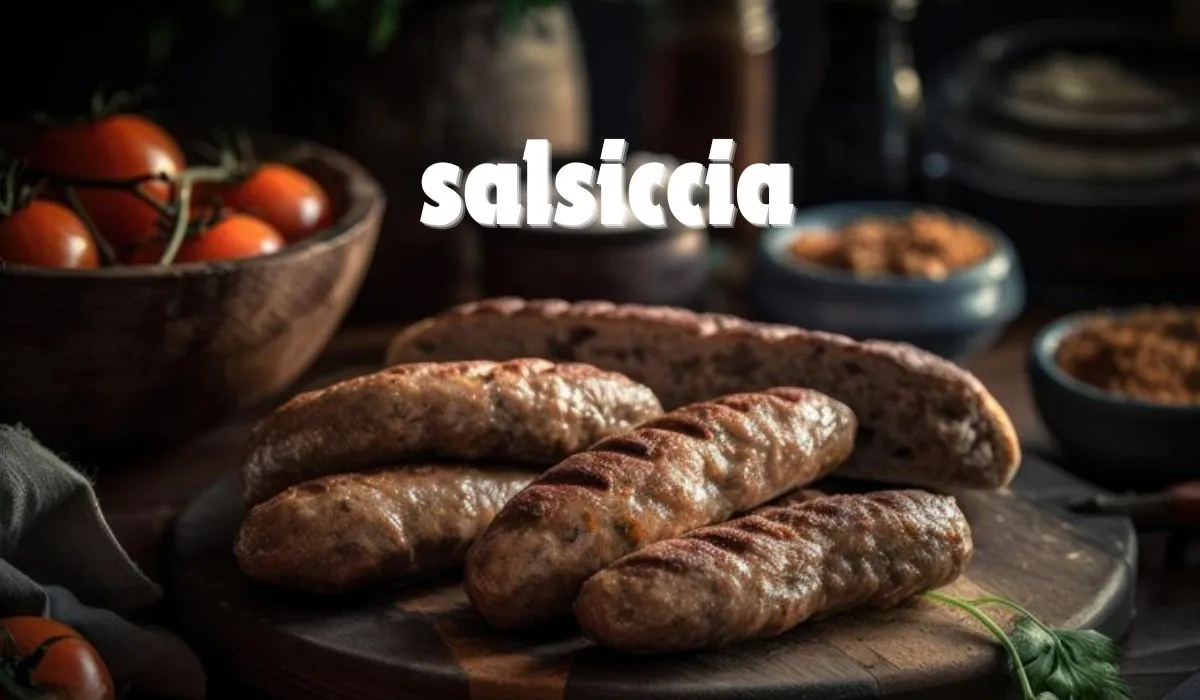Salsiccia, a word that might sound exotic yet familiar to many, is much more than just another sausage. If you’ve ever tasted authentic Italian cuisine, there’s a good chance you’ve encountered this savory delight. Made predominantly from fresh pork, salsiccia combines carefully selected scraps like pancetta and pork neck to create a product that is rich in flavor and texture.
The term salsiccia directly translates to sausage in Italian, but this particular type carries a legacy that sets it apart from other sausages. Its preparation, ingredients, and traditional methods make it a cornerstone in Italian culinary culture. But what truly makes salsiccia stand out is the fact that it has roots that stretch back centuries. It’s not just a food item—it’s a symbol of tradition and culinary artistry.
A Brief History of Salsiccia
To understand the prominence of salsiccia, we must journey back to ancient Italy. Sausage-making has long been a method of preserving meat, and salsiccia is believed to have originated during the Roman Empire. The ancient Romans were known for their love of seasoned and preserved meats, and sausage was a staple food item that could be easily stored and transported.
Trending
The Ultimate Guide to Pollaste : Exploring its Rich History, Benefits, and Delicious Recipes
Over time, different regions of Italy began to develop their own versions of salsiccia, adapting the recipe to local ingredients and traditions. This resulted in a wide variety of salsiccia types, each with unique flavors and textures. Today, salsiccia remains a favorite, whether it’s enjoyed fresh or cured.
Ingredients That Make Salsiccia Unique
The secret to salsiccia’s irresistible flavor lies in its simple yet carefully selected ingredients. The core component is fresh pork, often a combination of lean meat and fat, which gives the sausage its characteristic juiciness. Scraps of pancetta and pork neck are frequently included to enhance the flavor profile and texture.
Spices and herbs play a crucial role in salsiccia’s distinct taste. Fennel seeds, black pepper, garlic, and sometimes even a touch of red wine are common additions that bring out the rich flavors of the pork. Some varieties also include spicy chili peppers for an extra kick. This balance of meat and seasoning is what makes each bite of it an explosion of flavors.
Different Varieties of Salsiccia
It is not a one-size-fits-all sausage. There are two primary categories:
- Fresh Salsiccia: This type is sold raw and must be cooked before consumption. It has a juicy, tender texture and is often grilled, pan-fried, or used in sauces.
- Cured Salsiccia: This variety undergoes a curing process, making it shelf-stable. Cured salsiccia has a firm, dense texture and a more intense flavor, thanks to the longer aging process.
In addition, various regions of Italy have developed their own versions of salsiccia. For example:
- Salsiccia di Calabria: Known for its spiciness due to the use of chili peppers.
- Salsiccia di Toscana: A milder variety with a hint of fennel.
- Salsiccia di Norcia: Celebrated for its bold flavors and high-quality pork.
How Salsiccia is Made
The process of making it remains largely traditional, even in modern times. The meat is first ground and mixed with fat, spices, and herbs. This mixture is then stuffed into natural casings made from intestines, which allows the sausage to retain its shape and moisture during cooking.
While homemade salsiccia often adheres to time-honored methods, commercial it production involves more mechanized processes. However, the core ingredients and techniques have remained consistent, preserving the authenticity of this beloved sausage.
You Might Also Like: Masalwseen : Exploring the Rich Flavors and Cultural Significance of a Traditional Arabic Dish
Salsiccia vs. Other Types of Sausages
What sets it apart from other sausages? One major difference is the emphasis on freshness. Unlike many other sausages, which are smoked or fully cured before consumption, fresh it is typically enjoyed within days of its production. This gives it a distinct juiciness and tender texture that’s hard to find in other sausages.
Additionally, the use of fennel seeds and garlic as key flavor components gives it a unique flavor profile. While other Italian sausages like soppressata or cotechino have their own distinct tastes, salsiccia’s balance of meat and spices makes it particularly versatile in cooking.
Popular Dishes Featuring Salsiccia
It is an essential ingredient in many beloved Italian dishes. Some popular ones include:
- Pasta with Salsiccia and Creamy Tomato Sauce: A hearty pasta dish where the flavors of the sausage blend perfectly with a rich tomato-based sauce.
- Salsiccia and Peppers: A classic combination where the sweetness of the bell peppers complements the savory sausage.
- Salsiccia Soup: Perfect for colder days, this soup features chunks of sausage in a broth with vegetables and beans.
Cooking Tips for Salsiccia
The key to cooking it is not to rush the process. Whether you’re grilling, frying, or simmering it in sauce, the goal is to cook it slowly so that it retains its juices and becomes tender.
When grilling or pan-frying, it’s important to pierce the casing lightly to allow the fat to escape. For stews or sauces, brown the sausage first before letting it simmer with the other ingredients. This ensures that the flavors meld together beautifully.
Salsiccia Pairings
It pairs wonderfully with various foods and beverages. For wine lovers, a bold Chianti or a robust Barolo can elevate the sausage’s rich flavors. As for food pairings, try serving it alongside roasted vegetables or a fresh salad for balance.
Health Benefits
While it is undeniably delicious, it’s also quite nutrient-dense. Rich in protein and essential vitamins like B12, it can be part of a balanced diet when consumed in moderation. However, due to its high fat content, it’s important to enjoy it as an occasional indulgence rather than a daily staple.
How to Store Properly
Fresh should be stored in the refrigerator and consumed within a few days of purchase. If you’re not planning to cook it right away, freezing is an excellent option, allowing it to stay fresh for up to three months. Cured salsiccia, on the other hand, can be stored in a cool, dry place for several weeks.
Homemade Salsiccia: Can You Make It at Home?
Yes, making it at home is entirely possible! All you need are the right ingredients, a sausage stuffer, and some patience. The process involves grinding the meat, mixing it with spices, and stuffing it into casings. While it may take some practice to perfect, homemade salsiccia allows you to customize the flavors to your liking.
Where to Buy Quality Salsiccia
If making it at home isn’t your thing, fear not. Quality salsiccia can be found at most Italian specialty stores or reputable butchers. When buying, look for sausages that have a fresh, pink color and are free from preservatives or artificial additives.
Around the World
While salsiccia remains a staple in Italy, it has also gained popularity around the globe. In countries like the United States, chefs and home cooks alike have embraced this versatile sausage, incorporating it into dishes like pizza, stuffed peppers, and even breakfast casseroles.
Conclusion
At the end of the day, salsiccia’s enduring popularity is a testament to its versatility, rich flavor, and deep-rooted tradition. Whether you enjoy it grilled, cooked in a sauce, or cured and sliced, salsiccia offers a taste of Italy in every bite. As one of the most ancient sausages, it continues to hold its place as a beloved culinary classic that brings people together around the table.




